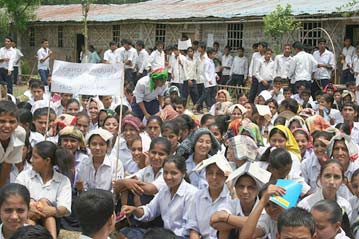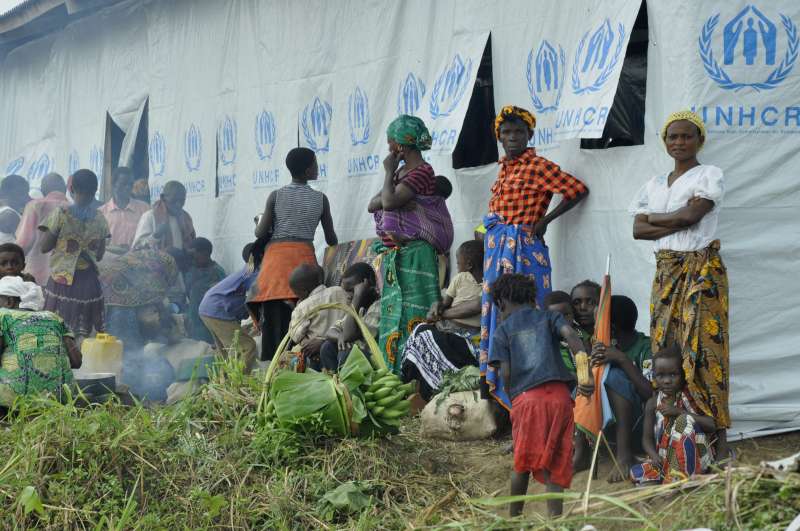The camps in Nepal housing the Bhutanese refugees (who are really ethnic Nepalis and not Bhutanese) are being depleted because the US and other Western countries, but mostly the US, got in the middle of a dispute going on between Bhutan and Nepal and resettled nearly 80,000 camp dwellers. It is still beyond me why the Bush Administration agreed to the resettlement plan.
Some of the camp dwellers, then and now, wanted the West to push for their “right to return” to Bhutan, and heck why wouldn’t they think the UN would help them when the UN continues after, what, 60 plus years!, to pressure Israel about a “right to return” for Palestinians. And, of course one wonders why Nepal couldn’t just take its own ethnic kinfolk back!

The only thing that makes sense to me is that big corporations (and people like Norquist’s pals) needed docile cheap LEGAL labor. Some big companies (especially meat packers) had already run into problems with the litigious Somalis and I surmise they then sent the word to the Bush State Department that they wanted workers who weren’t going to be troublemakers.
And, readers, remember that one of the great benefits to employers who want to keep wages down is that some of the living expenses of legal “refugees” are being covered by you, the taxpayer.
Of course we can’t discount the likelihood of the resettlement contractors needing a new batch of clients and therefore driving the resettlement. Contractors are paid by the head to resettle refugees.
Back in Nepal there are still camp residents who don’t want to come and live “like beggars” in some American inner-city and are holding out for repatriation to Bhutan. Here they are complaining that the UNHCR is (still!) putting pressure on them to sign up for third country resettlement.
From The Himalayan:
DAMAK: Office of the United Nations High Commissioner for Refugee has granted a month’s deadline to Bhutanese refugees who had earlier filled forms for third country settlement, to reconfirm their choice.
Since the process of third country resettlement of refugees began in 2008, at least 83,000 Bhutanese refugees have been settled in eight countries, including US, New Zealand, Netherlands, Canada, Denmark, Britain and Norway. Now, the UN Refugee Agency has granted a month-long deadline to those who had filled the interest forms for third country resettlement, but could not be contacted later.
The commission has notified all the three refugee camps at Beldangi, Damak and Shanischare, Morang. “We’ve granted extra time for those who had earlier filled the forms but failed to appear in the interview for the same. We have sent them forms to notify us their final wish,” said UNHCR Nepal office External Relationship Officer Nini Gurung, adding her office is now collecting the latest data of those who are willing to settle in a third country.
“I’ve got a form and I’ve written that I don’t have any interest in settling down in a third country,” said Beldangi-2 camp secretary Sanchahang Subba, adding that those refugees who want to return to their homeland were worried after hearing about the latest move of the commission. Harkajung Subba, one of the refugees who wants to return to his homeland, accused the UNHCR of trying to pile pressure on refugees to opt for third country resettlement.
Photo is from this story about the violent conflicts. Those wishing to return to Bhutan believed that once their numbers were depleted by “dispersing their people to the four winds” there would be no hope of pressuring the Bhutanese government.
We have written a lot about the Bhutanese refugee resettlement, click here to view our archive. Some have done well in the US, others have had lots of problems (and are creating some problems too according to sources who have worked with them!).



